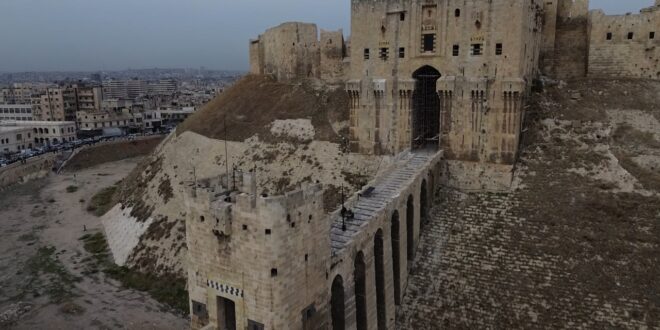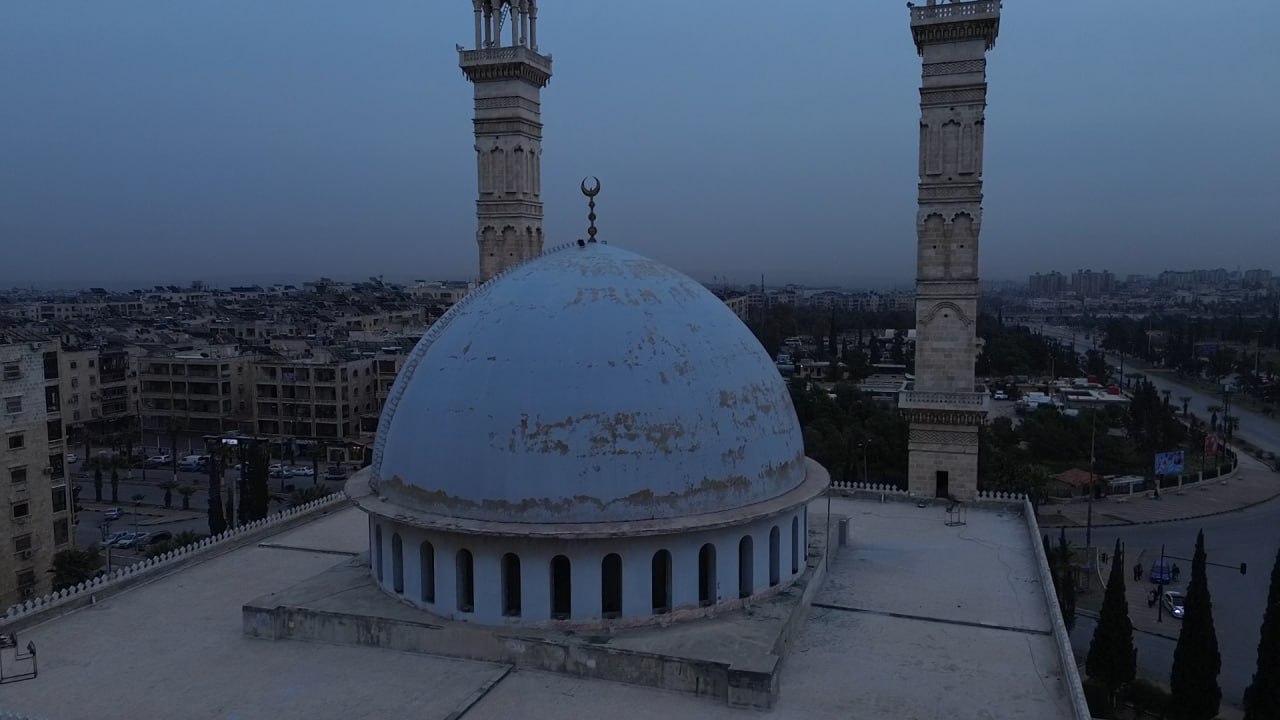Aleppo, SANA- Aleppo province is located in northern Syria and is adjacent to the southern borders of Turkey and it is one of the oldest inhabited cities in history and older than the capital, Damascus.
It is located at the crossroads of several trade routes since the second millennium BC, and was subject to the control of different civilizations, starting with the Hittites, then the Assyrians, the Arabs, the Mamluks and the Ottomans, and all of these civilizations left a heritage trace in its landmarks.
Due to its great historical importance, UNESCO has classified it as a historic city, as it contains more than 150 historical monuments from various human civilizations that lived in the city and ruled it until today, from prehistoric times to Islamic rule.
In 1986, Ancient Aleppo was registered in the archaeological records and was considered one of the landmarks that may not be demolished or its features or specifications changed except with permission from the international archaeological authorities.
The strategic importance of Aleppo is due to it being a major point of connection between the East and the West, as throughout its ancient history, it has remained an important political, economic, religious and vital center due to its location between the Eastern and Western worlds.
In addition to Aleppo being a cultural and civilizational meeting point between the East and the West, it was also a meeting place for trade caravans and a key to commercial exchanges between the two parties.
Aleppo is the economic capital of Syria, and it is known and famous for its ancient industries, such as textile, cotton, silk weaving, and laurel soap, which is considered one of the best in the world, as well as olive oil and food industries.
Aleppo is also famous for many types of traditional products and industries, such as leather, wool, dried fruit, glass and copper engraving.
Aleppo is a commercial center in the field of agriculture, as it produces wheat, cotton, barley, vegetables, fruits, nuts, and sesame, and specializes in pistachios, for which it is famous and exports them globally, in addition to modern, advanced industries of all kinds, as these industries have developed to include electrical appliances of all kinds, industrial equipment and machines, the manufacture of car bodies and spare parts, ceramics, ready-made clothes, plastics, and chemical industries.
Aleppo is famous for its various markets, which are named after crafts and industries, such as the Attarin Market, the Blacksmiths Market, and the Coppersmiths Market.
Its eastern markets are among the longest covered archaeological markets in the world, extending over an area of more than 15 kilometers, it is also known for its mosques and churches, among its most important mosques is the Great Umayyad Mosque, which was built during the Umayyad era.
This city is also known for its walls, gates and great castles, and when talking about ancient Aleppo, we must talk about its gates, the most prominent of which are: Bab al-Hadid, Bab Antakya, Bab al-Nasr, Bab Qinnasrin, Bab al-Nayrab and Bab al-Arbaeen.
Aleppo Citadel, which was built in the 13th century, is one of its most important historical landmarks and one of the most important castles in the world, and one of the oldest castles in history and is located in the middle of the city, tens of meters above the rest of the city. The citadel has maintained great military and strategic importance throughout historical periods, and UNESCO included it on the World Heritage List in 1986.
Fedaa al-Rhayiah
 Syrian Arab News Agency S A N A
Syrian Arab News Agency S A N A



